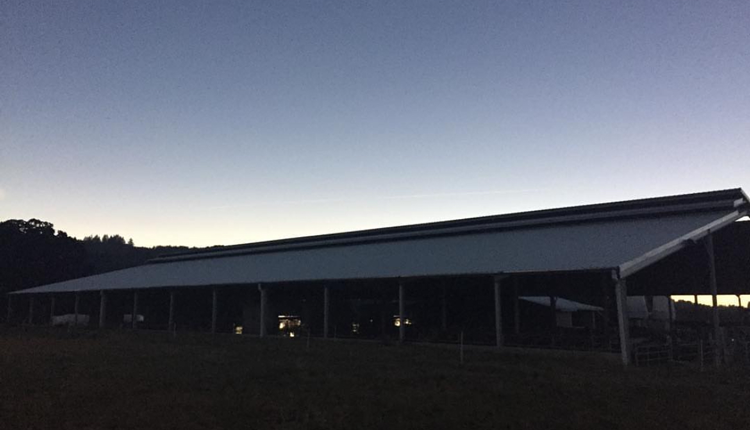Milking and managing cows with robots requires some new management styles. As a follow-up to our February 25 Round Table "Robots milk our herds," these herd owners discuss handling repairs and buying used units. To read the entire Round Table, click here.
Next week, on March 5, learn more about what these operators would have done differently.

Colby (Spencerport, N.Y.): When the robot doesn't work, it calls us. Up to 95 percent of the time it is a simple issue we can fix in less than 30 minutes. Another 4 to 5 percent of the time we can fix the issue in less than 2 hours with phone assistance from a technician.
The remaining couple times we've had to have a technician come out to the robot facility which now only takes 1 to 2 hours of driving time, and then they are able to get the robot milking again within an hour of being on the farm.
We have a generator at the robot facility that we hook up when the power goes out. Loss of power to the air compressor means that the gates stop working, so a cow in the box is stuck there until the gate is manually opened.
Hammer (Leduc, Alberta, Canada): Many times, if the robot won't work, all it takes is restarting the VMS and office computer. Other times you may have to figure out the problem and correct it. Many times, technical help over the phone with your dealer can walk you through a process of diagnosing and fixing the problem. If all this does not work, you may need a service call. We also have a backup generator for power outages.
Kappers (Ingersoll, Ontario, Canada): We either try to fix the problem ourselves, or in the case of more complex issues we call a 24-hour manufacturer's service. We use a generator in case of power failure.
Meuwissen (Mariahoop, The Netherlands): I can fix most alarm conditions myself. Often the problem is a twisted, detached or leaking piece of rubber or a simple valve replacement. I keep those parts in stock on the farm.
For anything major, I call for technician service, both because it has to be fixed quickly and because I am busy enough caring for the cows. Most problems are resolved within one or two hours. Having the herd split so that each group has access to two to four robots is an advantage when there is a breakdown. I have a tractor-powered generator which I hook up if there is a power failure.
Colby: When we built the robot facility, no refurbished robots were available in the U.S. Since we looked into buying used units, they've become available in the U.S.
Hammer: We did not consider purchasing used units in 2004, as the technology was new and the availability of used units was rare.
Kappers: Olspank Dairy was the first robot farm in North America in 1999. Originally, we started with one new A2 Lely prototype. Subsequently, we purchased two additional, refurbished A2s. As a new Lely A4 became available in North America 1-1/2 years ago, we decided to trade the existing system for three new A4s.
We would always consider the purchase of refurbished units, as long as they were offered by a trusted manufacturer at a competitive price. In fact, this may be our approach when we convert from a parlor to robots at Subliem Dairy.
Meuwissen: There were no used units for this brand available at the time. If there had been an option, I probably would not have risked starting with used equipment with our herd size.
Next week, on March 5, learn more about what these operators would have done differently.

How do you handle a breakdown to your robot?
Colby (Spencerport, N.Y.): When the robot doesn't work, it calls us. Up to 95 percent of the time it is a simple issue we can fix in less than 30 minutes. Another 4 to 5 percent of the time we can fix the issue in less than 2 hours with phone assistance from a technician.
The remaining couple times we've had to have a technician come out to the robot facility which now only takes 1 to 2 hours of driving time, and then they are able to get the robot milking again within an hour of being on the farm.
We have a generator at the robot facility that we hook up when the power goes out. Loss of power to the air compressor means that the gates stop working, so a cow in the box is stuck there until the gate is manually opened.
Hammer (Leduc, Alberta, Canada): Many times, if the robot won't work, all it takes is restarting the VMS and office computer. Other times you may have to figure out the problem and correct it. Many times, technical help over the phone with your dealer can walk you through a process of diagnosing and fixing the problem. If all this does not work, you may need a service call. We also have a backup generator for power outages.
Kappers (Ingersoll, Ontario, Canada): We either try to fix the problem ourselves, or in the case of more complex issues we call a 24-hour manufacturer's service. We use a generator in case of power failure.
Meuwissen (Mariahoop, The Netherlands): I can fix most alarm conditions myself. Often the problem is a twisted, detached or leaking piece of rubber or a simple valve replacement. I keep those parts in stock on the farm.
For anything major, I call for technician service, both because it has to be fixed quickly and because I am busy enough caring for the cows. Most problems are resolved within one or two hours. Having the herd split so that each group has access to two to four robots is an advantage when there is a breakdown. I have a tractor-powered generator which I hook up if there is a power failure.
Did you consider refurbished robotic units?
Colby: When we built the robot facility, no refurbished robots were available in the U.S. Since we looked into buying used units, they've become available in the U.S.
Hammer: We did not consider purchasing used units in 2004, as the technology was new and the availability of used units was rare.
Kappers: Olspank Dairy was the first robot farm in North America in 1999. Originally, we started with one new A2 Lely prototype. Subsequently, we purchased two additional, refurbished A2s. As a new Lely A4 became available in North America 1-1/2 years ago, we decided to trade the existing system for three new A4s.
We would always consider the purchase of refurbished units, as long as they were offered by a trusted manufacturer at a competitive price. In fact, this may be our approach when we convert from a parlor to robots at Subliem Dairy.
Meuwissen: There were no used units for this brand available at the time. If there had been an option, I probably would not have risked starting with used equipment with our herd size.











